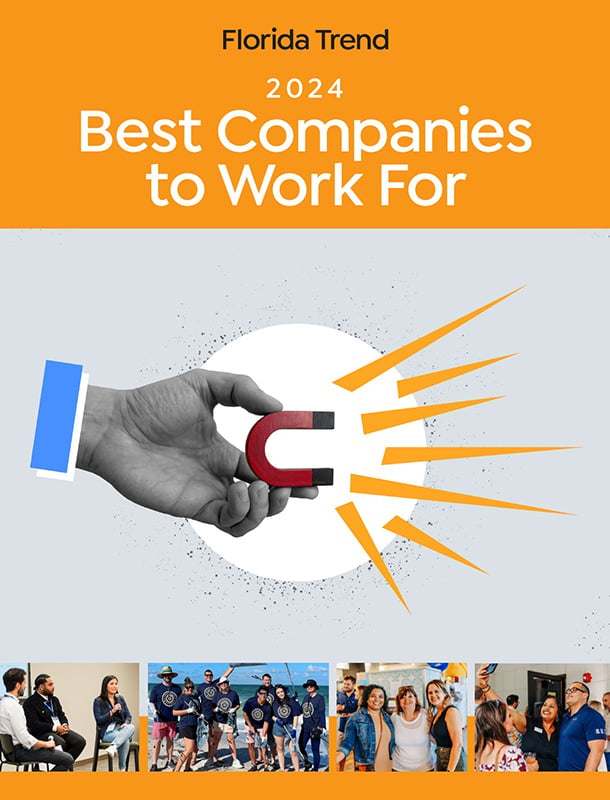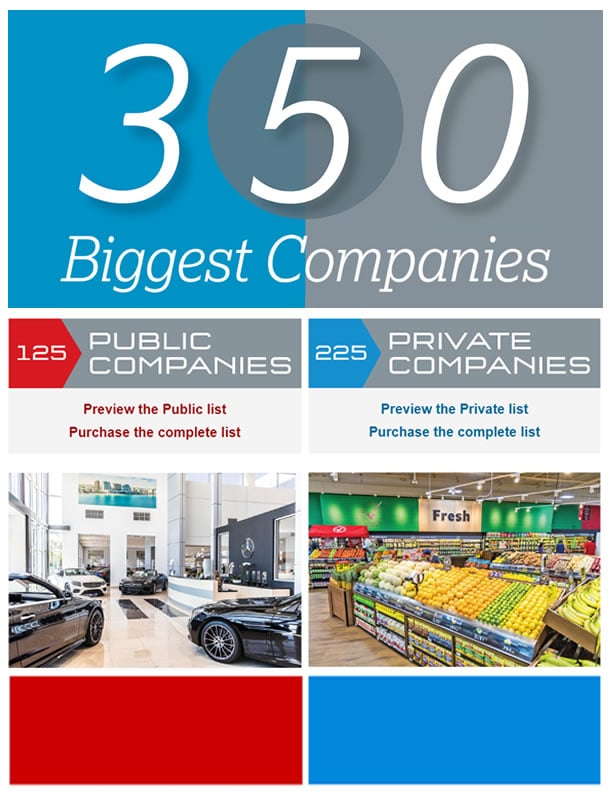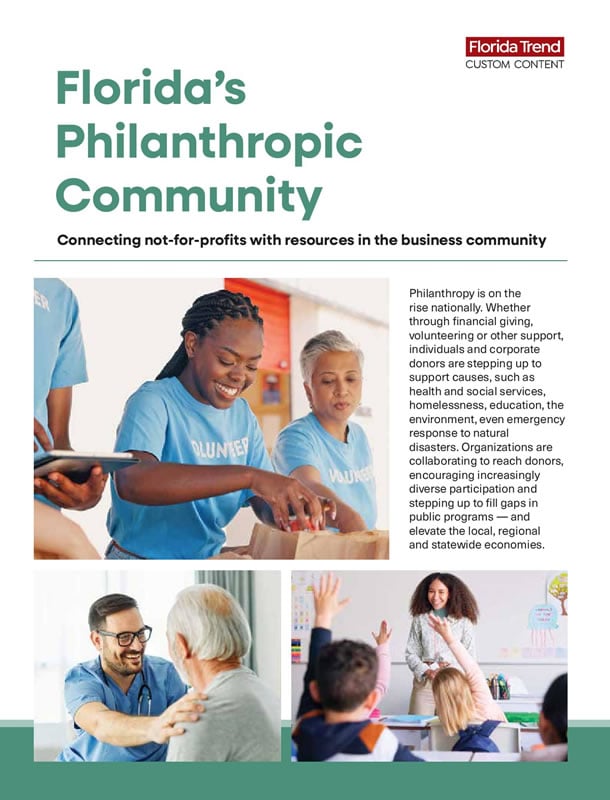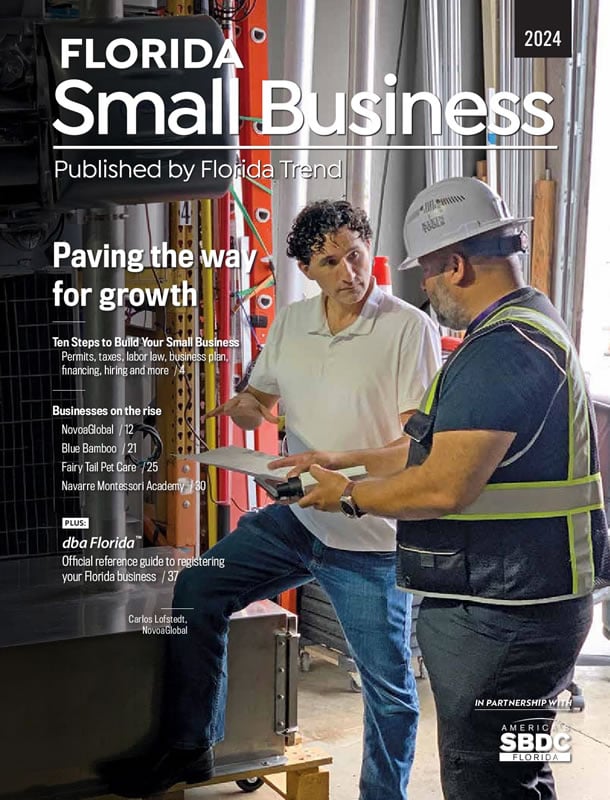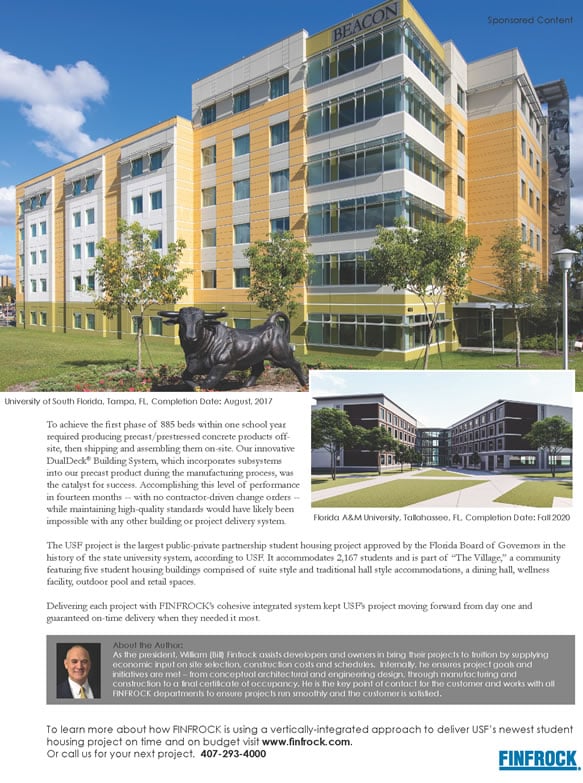For the first time, people can develop relationships on a one-to-one level through the Internet, says Bryn Tindall, founder of Tampa-based Horizon Marketing Group, which specializes in the latest e-marketing tools. Simply having a good website is not enough, and as users become more sophisticated, they're looking past banner ads, heading straight to the information they want. Here are some ways to generate traffic and repeat visits to your company's website:
1. Scan Chat Rooms and News Groups. A 3-year-old Tampa company that offers personal computer help, PC Show and Tell (pcshowandtell.com), has an employee visit online chat rooms and news groups to scan the conversations and look for people with common computer software questions. He then offers suggestions and refers them to his company's site. "We get a good amount of traffic from that," says Whit Wannamaker, PC's chief marketing officer. Etiquette is important, so don't be too commercial. Help them first, and then suggest the site, he says. This can work with different types of companies, too. For example, if your site sells floral arrangements, find a chat room that relates to that topic.
2.Use Viral Marketing. Not as sick as it sounds, this means disseminating e-mails that appear to be for entertainment or educational purposes, but actually promote your company. One way to do this is to send out interesting jokes, poems or graphics with your company's name and link on the bottom. Another option is sending a clever tip of the week to people who have signed up on your website and asking them to pass along the tip to friends and family. "Once they're out there, they get around," says Wannamaker. "It's so easy to forward e-mail." If you can't generate an e-mail list, put humorous clips or cartoons on your site that people will want to download and forward to their friends.
3.Take Advantage of Reciprocal Linking. Offer links that your users will want to frequent and it will give them an incentive to bookmark your site and return to it. E-mail your intentions to the webmaster of the linked site, include your URL and request that they reciprocate with a link back to your site. "Look for synergistic relationships," suggests Tindall with Horizon Marketing. Wannamaker says his company provides links to sites that complement his online software support business, such as technical support sites.
4.Make the Most of Search Engines. Register with the major search engines plus those that focus on your industry or geographic area. Then find ways to make your site pop up at the top of the search engine list. This can be tricky, and it varies by search engine, so you may need outside help. If you want to try it on your own, here are some suggestions:
-- Check your website statistics. Every website has a statistics package allowing you -- but not competitors, since a password is required -- to see the paths that people are using to get to your site. For example, if you discover that most visitors linked to your site from Yahoo, you can investigate how to make your site come up higher in Yahoo searches.
-- Optimize your "page source" information. When users enter keywords into a search engine, the more appropriate words you have within your page source the better, since it increases the odds that your company will be listed higher among the search results. If another company has designed your site and you're not sure about your page source words, you can check by going to your website, pulling down the view menu on your browser and clicking on page source. Source information includes title tags, keywords, metatags, text on the body of the page, text on graphics, descriptive text, etc.
-- Look at the website "page source" of your competitors. No password is required, and at most sites you can see what keywords, metatags, title tags, etc., they're using and adjust yours accordingly. Remember, competitors will be checking up on your site, too, and adjusting their page source information if your company comes up ahead of theirs in a search engine.
SBA Loans: More Money
North Florida
The North Florida Small Business Administration (SBA) made more loans in 1999 than in 1998 to small businesses in the 43 counties it covers. The district made loans to 704 small businesses, a 19% increase. The $197.4 million in loans made was up $44 million from last year. For details, call the North Florida SBA at 904/443-1933, or visit the SBA website (www.sba.gov).
South Florida
SBA start-up and growth loans made to south Florida small businesses increased by more than 9% in fiscal year 1999. The SBA helped 1,338 small companies that qualified for in total about $411 million in financing to start or expand their businesses. Last year the district provided 1,227 loans worth $301 million.
The South Florida SBA office, serving 24 counties south of Orlando, has also started two new loan programs. The Community Express Pilot Loan Program enlists community-based resource providers to oversee technical assistance on 80% guarantees for loans up to $100,000 and 75% for loans up to $250,000. The pilot program will run for five years. Under the MicroLoan Program, the SBA makes funds available to nonprofit intermediaries, who in turn make loans ranging from $100 to $25,000 to eligible borrowers. For details, contact the South Florida SBA at 305/536-5521, or visit the SBA website (www.sba.gov).
Changing with the Times
BVP is taking its core business of creating promotional videos and moving into the
world of CD-ROMs and website design.
by Mindy Tanenbaum
Mark Wiskup managed to turn $8,000 of his savings into a $3.2-million business. A 1978 graduate of Northwestern's journalism school in Chicago, Wiskup's career began as a television business reporter in Jacksonville and then in several other cities around the U.S. On a couple occasions, people he was interviewing for stories asked if he was interested in making promotional videos for their businesses. He had to decline, but the idea intrigued him, and in 1985 he left journalism to start his own company, BVP (Business Video Productions), in Denver. He and a partner made promotional videos that companies distributed to potential customers, employees and shareholders.
Wiskup, now 43, says he moved from Denver to Tampa in 1988 after doing research on business trends. His partner kept part of the company in Denver, and "I started here with a clean slate," Wiskup says. He went door-to-door, drumming up business. "I told people video was the way to go," he says. But since VCRs were relatively new, it took some work to get clients. His promotional video business chugged along for nearly a decade before the evolution in technology convinced Wiskup it was time to expand. "Media and information dissemination has changed," he says.
Wiskup has made Tampa-based BVP into a $3.2-million company with 13 employees. The company has moved aggressively into digital media, where users can interact with the information, not just look at it. "Digital media allows people to go where they want, when they want," Wiskup says. In addition to promotional videos, BVP does live events for companies, as well as website design and interactive marketing products such as CD-ROMs.
BVP's best marketing tool is promoting itself through pro bono work in the community -- taking the occasion to show its best work to decision-makers, Wiskup says. The company has landed clients such as GTE Data Services, Time Warner, Ernst & Young and AAA Auto Club South. Videos typically cost a company about $20,000, while a CD-ROM production can run as much as $100,000. "This is where the industry is going," Wiskup says. "Our clients have been coming back asking for more." Nearly 75% of BVP's business is repeat customers.
Wiskup predicts BVP's revenues will hit $6 million by 2002. His company helps clients succeed, he says, by offering the right mix of presentations and interactive communication and keeping up with changes in technology. "We have to stay ahead of the curve in this business."
Small Talk
Online Banking Survey
While small businesses are using the Internet as a tool to help them grow, they're more cautious when it comes to banking online, according to a survey by Chicago-based Bank One Corp. (www.bankone.com). According to a study this summer of 300 small businesses, only 6% bank through the Internet. But the poll found that nearly half of small businesses already have online access, 41% regularly use e-mail to conduct business and 20% have their own websites. In addition, the survey found that 16% regularly use the Internet to buy products and 12% sell online. Bank One and other financial institutions say they're confident that online banking will grow in popularity in the next decade, much as the use of ATMs did in the late 1980s.
Drug Testing Services
The U.S. Small Business Administration will provide $4 million in grants and contracts through its new Drug-Free Workplace Demonstration Program. Florida Drug Screening Inc. in Palm Bay received one of the grants, nearly $131,000, to help small business owners form a drug-free workplace program policy and to offer drug testing at no charge. To assist small businesses, which often don't have the resources or staff to handle substance abuse issues, Congress established the program with the passage of the Drug-Free Workplace Act of 1998. For more information, contact Florida Drug Screening at 407/728-2941 or the SBA (www.sba.gov).
Venture Capital: Who's Getting Funded
Any Florida company in search of venture capital should keep one word in mind -- communications. No, that doesn't mean more talking, writing or e-mailing. It's just that communications businesses are at the top of the list when it comes to getting venture capital.
Of the $151.1 million invested in Florida companies during the third quarter of 1999, communications companies received $108 million, according to PricewaterhouseCoopers Money Tree Survey. Eight of 18 venture capital deals in Florida involved communications companies. More than half of the money went to two companies: AirNet Communications in Melbourne and PNV.com (formerly named Park 'N View) in Fort Lauderdale. AirNet, which makes base stations that support high-speed wireless Internet, raised $30 million in expansion capital from Pennsylvania-based Adams Capital Management. Wall Street pumped in more capital in December, when AirNet raised $77 million in an initial public offering. PNV.com provides truck-stop hook-ups for cable TV, phone service, voice messaging and the Internet -- including a trucking website.
Start-Ups: An Hispanic Lifeline
Internet incubators such as CMGI and Internet Capital Group are hot properties on Wall Street. Now, a group of Miami entrepreneurs has formed Latinest, the first Internet incubator focused on finding and developing early stage Internet ventures that target Latin American audiences. "Entrepreneurs wishing to take advantage of the fast-growing Latin American and Hispanic online markets face the complexity and cost associated with a venture without a structure to support it. Latinest will fill this void by providing the funding, expertise and infrastructure these ventures need to thrive and become dominant players," says Latinest founder Gabriela Sabate. Latinest, which is accepting business plans by e-mail (ideas@latinest.com), takes an equity stake in each portfolio company as compensation for financing and support, which includes marketing, technology, business development, and legal, office and financial services.



